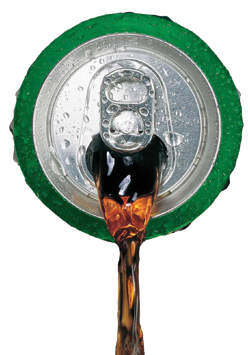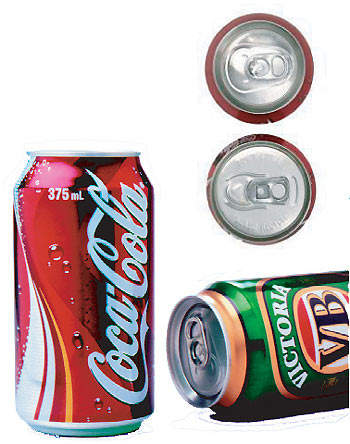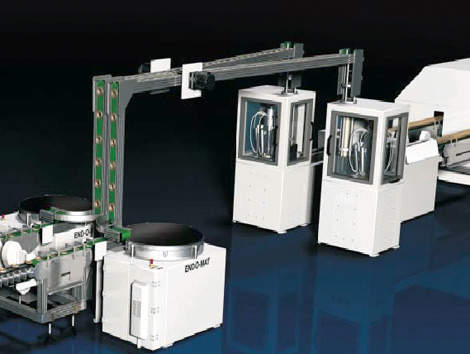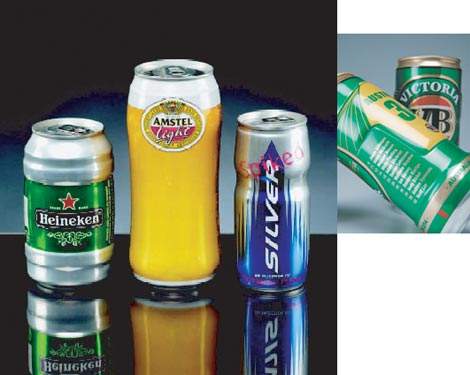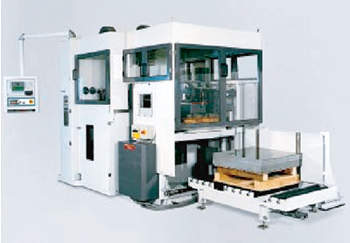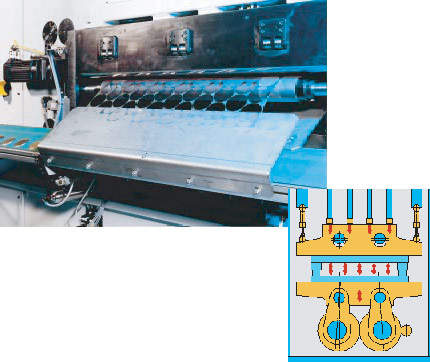In 2003 Amcor introduced new technology into the Australian canned beverage industry. The company invested over A$8m in upgrading existing equipment and installed new equipment in its can manufacturing plant at Rocklea, Queensland, Australia, to produce the ‘Ezi Drink Can’, which replaced the old format 375ml, 206 (2 6/16in) diameter can.
The plant produces a diverse range of can sizes and has a capacity of about 850 million cans a year. It has about 90 employees. The company also introduced a marketing tool to the packaging industry by installing equipment capable of producing a specially shaped can for limited-edition products or special events. An example of this was the ‘cricket shirt’-embossed can produced for Carlton and United Breweries to package their Victoria Beer to commemorate the one-day internationals taking place in 2003-2004.
The 375ml cans had a Victoria Beer logo embossed on one side and one of 12 different shirt variations on the other, one for each of the Australian players. A team from Carlton and United Breweries, Igloo Marketing and Amcor created the design.
In August 2009, Amcor announced plans to acquire some businesses of Alcan Packaging from Rio Tinto for A$2.02bn. The acquisitions include Alcan Packaging Global Pharmaceuticals, Alcan Packaging Food Europe, Alcan Packaging Food Asia and Alcan Packaging Global Tobacco.
In February 2010, Amcor launched a new global brand to indicate the formation of a new company. The decision was taken following Amcor’s acquisition of the assets of Alcan Packaging on 1 February 2010.Amcor also acquired the Alcan Medical Flexibles operations in July 2010.
SIG technology for new cans
The contractor/supplier for the upgrade and modifications of Amcor’s Rocklea plant was SIGPack and related divisions of the SIG group of companies (SIGBeverage and SIGCantec). The equipment used for the blanking and deep drawing of the can stock and stamping of the end stock for the 202 Super End was the SIG EndoMat system.
The systems at Rocklea were given dye upgrades and other modifications by SIG engineers to enable them to produce the Ezi Drink Can at a rate of over 600 million per year.
Amcor also upgraded four other can manufacturing plants in Australia, requiring a total investment of A$32m.
Amcor’s Ezi Drink Can
The Ezi Drink Can format has become the industry standard, having been widely adopted by Coca-Cola, PepsiCo and many breweries in the USA, Europe and South Africa. The can format has also taken over in Australia and New Zealand for the packaging of soft drinks and beer.
The Ezi can was designed to provide consumers with ease of opening and improved pouring and drinkability from the can, results of its larger opening.
The conversion from the standard 206 end to the 202 SuperEnd of the Ezi Drink Can format results in metal savings achieved from reductions in both the end diameter and gauge. Such savings are important in maintaining the viability of the aluminium can in a competitive market and provide a benefit to the environment as a result of the lower aluminium usage in each can.
Amcor licensed the rights to produce the can style from Crown Cork and Seal of the USA.
Aluminium can embossing technology
The embossing of the cans is carried out by a new stage in the manufacturing process. An aluminium can is usually formed from a lubricated circular blank by blanking and deep drawing to form the basic cylinder. The cylinder is then ‘wall-ironed’, a further extrusion process to keep the walls blemish-free and flat.
Subsequently, the cylinder is trimmed to size, and necked and flanged at the top for the end closure of the can. The can form is washed several times to remove dust and lubricant before printing and lacquering on the outside, and coating the inner walls with a resistant polymer.
Another stage introduced after the printing: is the can is passed through a shaping moulding machine, which forms the final embossed shape using the force of hot air pressure against a specially designed metal mould. Amcor has the capacity to produce 25 million of the embossed cans per year at the Rocklea plant.
Shaped cans are available in the 250ml to 500ml size range, as well as the 375ml preform. Designs can include symmetrical and asymmetrical shapes with a 5% to 8% maximum diameter change. The equipment also provides label registration for deep panel embossing.
Amcor fibre plant upgrade
In April 2007 Amcor opened an A$41m expansion of its corrugated box plant facility in Rocklea. This expansion made the site one of the largest corrugated box operations in the world, with two corrugators and annual production in excess of 240 million square metres.
This project involved integration of equipment from the company’s west end plant (corrugator and convertor) and also the adoption of new material transportation systems and automatic palletisation.
The Rocklea site is now central to Amcor’s Australian fibreboard operation.
The plant is configured to produce Xitex (Amcor patented corrugated solution for superior strength) and also the full range of standard corrugated flutes.
The site also has five flexo folder gluers and five die cutters to give Amcor more scope for fibreboard packaging production.
The project saw a 40% increase in floor space at the plant to give a new total area of 51,500m². This area supports two corrugators, additional converting equipment and an expanded paper storage area. The company also made a commitment to reduce its water use by 20% at the Rocklea site.

